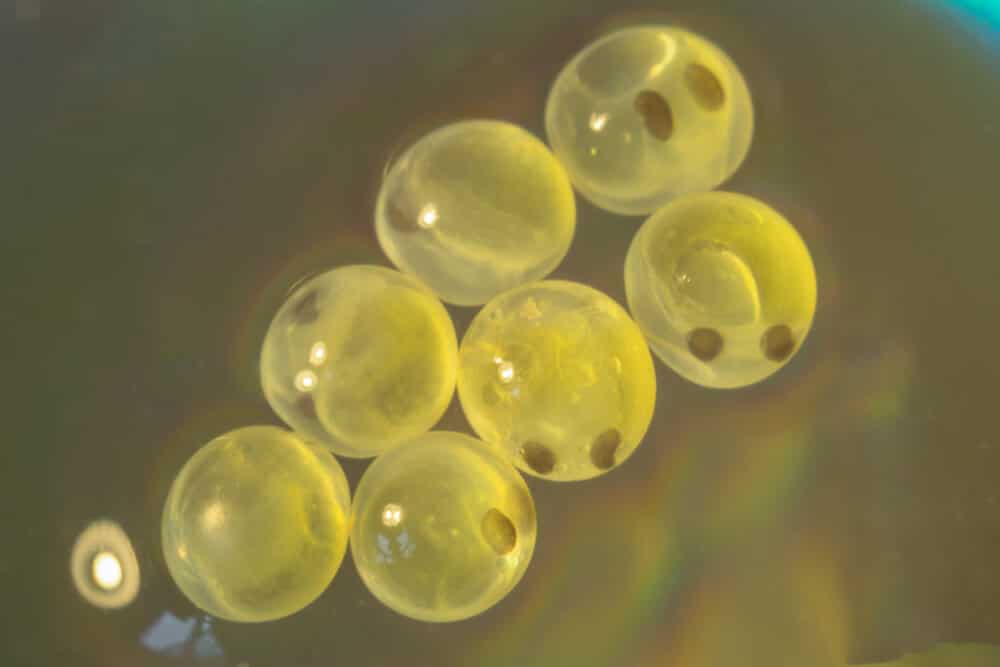A Visual Guide To Common Fish Egg Types

A Visual Guide To Common Fish Egg Types. Discover more detailed and exciting information on our website. Click the link below to start your adventure: Visit Best Website. Don't miss out!
Table of Contents
A Visual Guide to Common Fish Egg Types: Identifying Eggs from Different Species
Identifying fish eggs can be a fascinating, yet challenging, endeavor. Whether you're a seasoned angler, an aquaculture enthusiast, or simply curious about the aquatic world, understanding the visual differences between various fish egg types is crucial. This comprehensive visual guide will help you distinguish common fish eggs based on their size, shape, color, and other key characteristics. We'll cover everything from the tiny eggs of the minnow to the larger, more readily identifiable eggs of salmon.
Why Identify Fish Eggs?
Knowing how to identify fish eggs is important for several reasons:
- Conservation efforts: Accurate identification helps monitor fish populations and implement effective conservation strategies.
- Aquaculture: Proper identification is essential for successful breeding and rearing programs.
- Scientific research: Studying fish eggs contributes to a deeper understanding of fish biology and ecology.
- Angling: Recognizing fish eggs can indicate spawning grounds and provide valuable insights into fishing patterns.
Visual Characteristics of Common Fish Egg Types
Fish eggs exhibit remarkable diversity in their appearance. Key visual characteristics used for identification include:
- Size and Shape: Eggs range drastically in size, from tiny specks to relatively large spheres. Their shapes vary from spherical to oval, elongated, or even slightly irregular.
- Color: Egg color is highly variable, ranging from translucent or clear to various shades of yellow, orange, pink, green, or even black. The color can also change as the eggs develop.
- Egg Mass Structure: Some fish lay their eggs individually, while others lay them in clumps, strings, or gelatinous masses. The structure of the egg mass can be a crucial identification feature.
- Presence of an Oil Globule: Many fish eggs contain a visible oil globule, which provides nourishment to the developing embryo. The size and position of this globule can be distinctive.
Visual Examples:
While a true visual guide would require images, we'll describe some common examples:
1. Salmon Eggs (Salmonidae): Relatively large, orange-pink to reddish-orange, typically laid in redds (nests). They are relatively easy to identify due to their size and vibrant color.
2. Cod Eggs (Gadidae): Small, translucent to slightly yellowish, pelagic (floating) eggs. They are often found in large masses. Their small size and pelagic nature are key distinguishing features.
3. Trout Eggs (Salmonidae): Similar in size and shape to salmon eggs but often a lighter, more yellowish-orange. They are also laid in redds, making location a vital identifier.
4. Minnow Eggs (Cyprinidae): Extremely small, translucent, and often laid in large, adhesive masses attached to vegetation or other substrates. Their diminutive size makes them difficult to see without magnification.
Further Resources and Identification Tools
Identifying fish eggs accurately requires expertise and often the use of specialized tools like microscopes. We recommend consulting field guides specific to your region and seeking advice from experienced ichthyologists or fisheries biologists for accurate identification.
Want to learn more about specific fish species and their egg characteristics? Explore our comprehensive database of fish species (link to database – if available).
Note: This article provides general information. Always prioritize responsible and ethical practices when interacting with fish and their habitats. Avoid disturbing spawning sites and adhere to all applicable regulations.

Thank you for visiting our website wich cover about A Visual Guide To Common Fish Egg Types. We hope the information provided has been useful to you. Feel free to contact us if you have any questions or need further assistance. See you next time and dont miss to bookmark.
Featured Posts
-
 The Price Of Pushing Taboo Examining The Risks And Rewards
Feb 05, 2025
The Price Of Pushing Taboo Examining The Risks And Rewards
Feb 05, 2025 -
 Brian Murphy Obituary Remembering A Beloved Relationship Profession
Feb 05, 2025
Brian Murphy Obituary Remembering A Beloved Relationship Profession
Feb 05, 2025 -
 Quick 1000 Grams To Cups Conversion Your Handy Kitchen Cheat Sheet
Feb 05, 2025
Quick 1000 Grams To Cups Conversion Your Handy Kitchen Cheat Sheet
Feb 05, 2025 -
 Is A Buffy The Vampire Slayer Reboot Happening On Hulu
Feb 05, 2025
Is A Buffy The Vampire Slayer Reboot Happening On Hulu
Feb 05, 2025 -
 Norfolk Craigslist Find Your Next Treasure
Feb 05, 2025
Norfolk Craigslist Find Your Next Treasure
Feb 05, 2025
